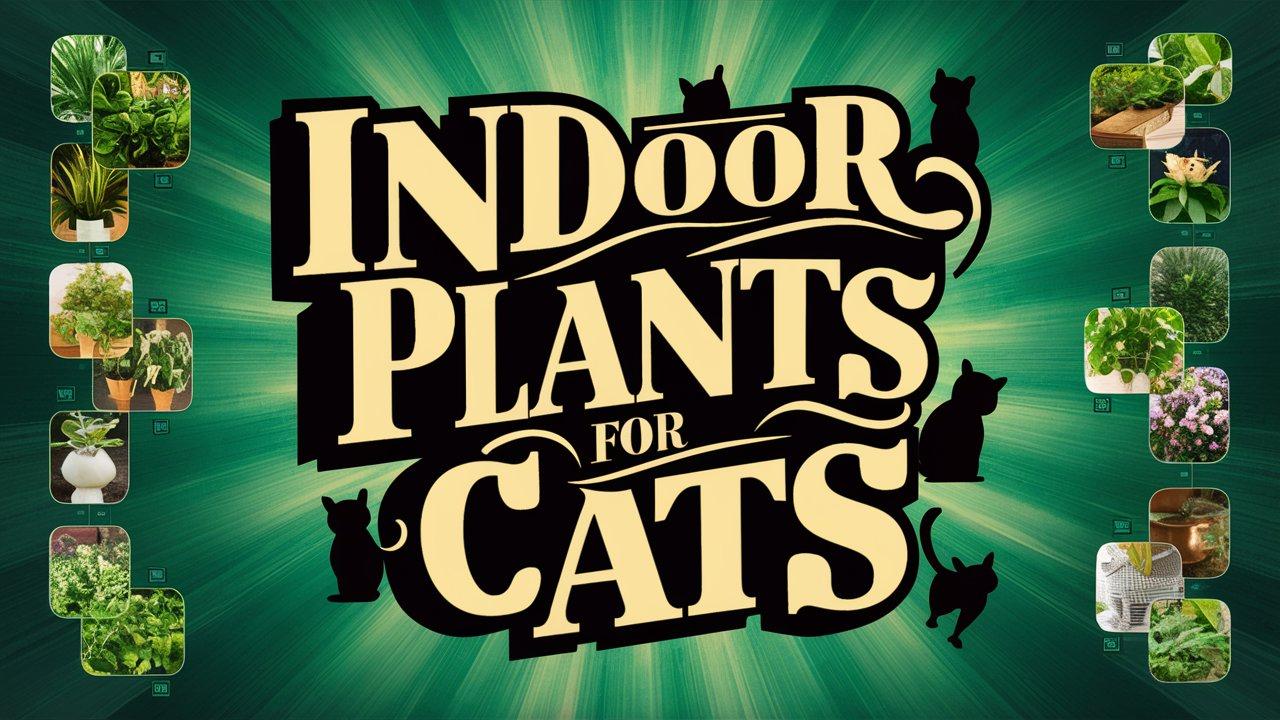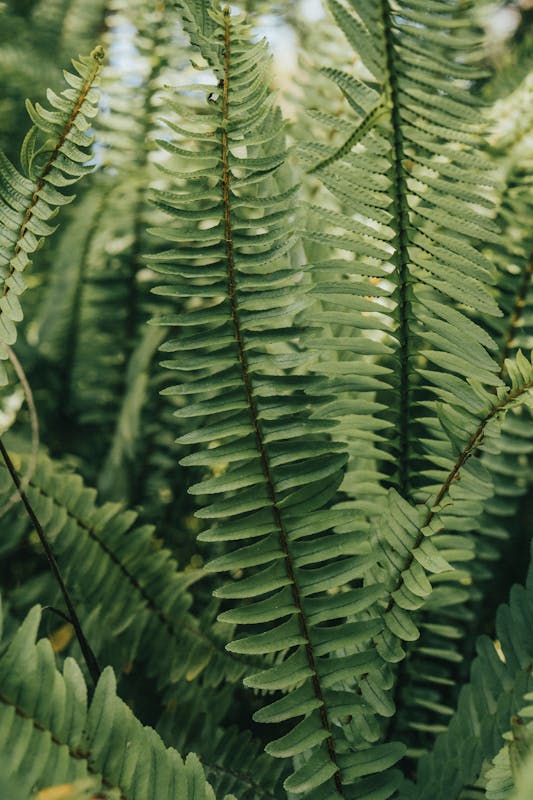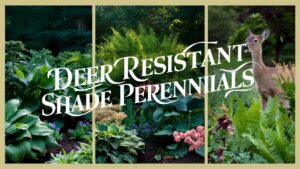With a range of choices available, cat owners can cultivate beautiful indoor gardens without compromising their pets’ safety. By selecting any of the following plants, you can create a visually stunning and enriching environment that enhances your indoor space and keeps your furry friends safe.
Boston Fern (Nephrolepis)
The Boston Fern is a classic houseplant known for its lush, arching fronds and ability to thrive in a variety of indoor environments. This plant not only adds a touch of verdant elegance to your home but also contributes to improved air quality by removing toxins. The Boston Fern thrives in indirect light and enjoys high humidity, making it an excellent choice for bathrooms or kitchens. It tolerates typical indoor temperatures but benefits from regular misting to maintain moisture.
From a cat owner’s perspective, the Boston Fern is particularly appealing because it poses no toxicity risk to feline friends. While cats are often attracted to the texture of ferns, resulting in playful batting and nibbling, you can rest assured that the Boston Fern is safe. However, excessive ingestion might still upset their stomachs, so it’s wise to monitor their interactions. To keep your fervent feline from making a meal out of your fern, consider placing it in an elevated location or using deterrents like citrus-scented sprays, which many cats find unappealing.
African Violet (Saintpaulia)
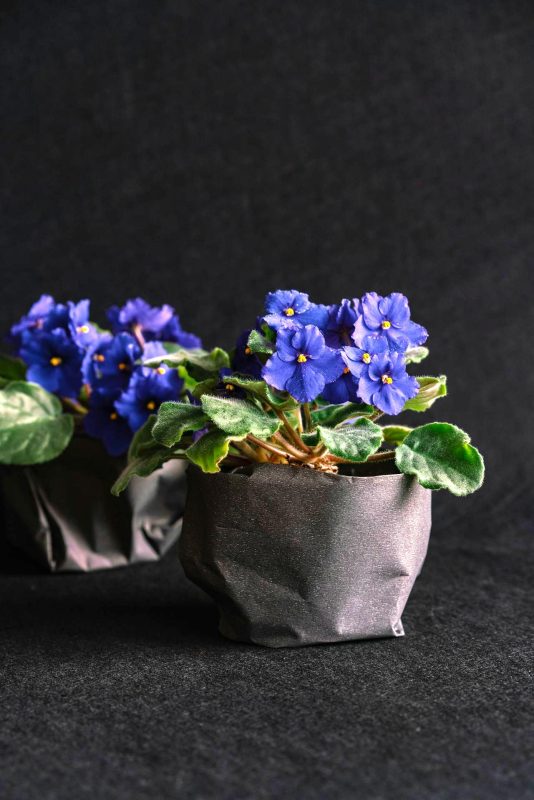
African Violets are a delightful addition to any indoor plant collection, known for their stunning blooms that come in a variety of colors, from soft lavenders to vibrant blues and pinks. These plants are small, compact, and offer continuous flowering when provided with the right care. They thrive in bright, indirect light and prefer a consistent source of moisture, making them relatively easy to care for when you develop a routine.
One of the major benefits for cat owners is that African Violets are completely non-toxic to cats. This is particularly important for homes where cats roam freely as these plants can become a tempting target for curious paws. While they are safe, it’s a good idea to provide adequate space around the plant to discourage digging or knocking over the delicate foliage. Regular fertilization during the growing season will encourage blooming and keep the foliage lush, allowing you to enjoy the beauty of these plants whilst keeping your feline friends safe.
Baby’s Tears (Soleirolia soleirolii)
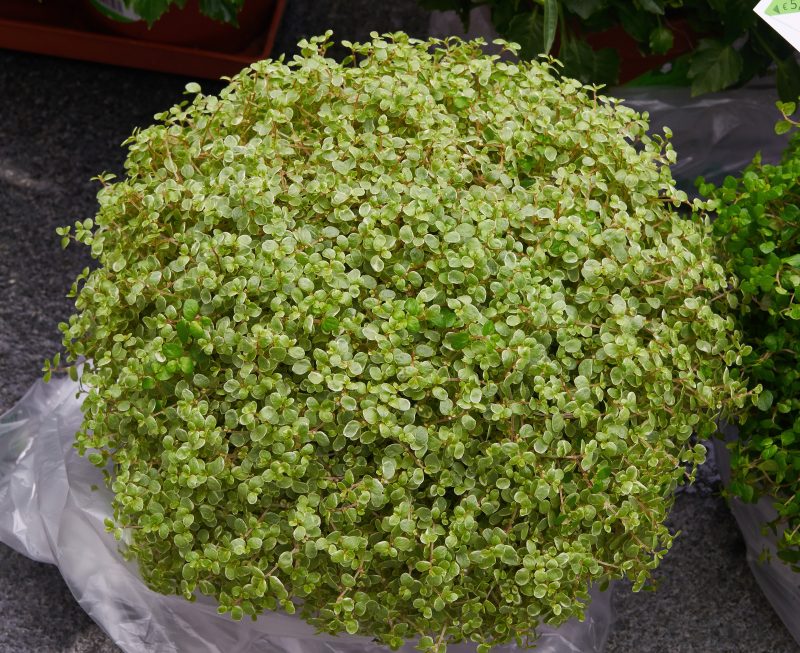
For those looking to create a lush, green environment indoors, Baby’s Tears is a fantastic choice. This plant features small, round leaves that form a dense, mat-like growth, perfect for trailing over shelves or as a ground cover in mixed plant arrangements. Baby’s Tears thrives in bright, indirect light and requires consistent moisture to maintain its vibrant appearance. It’s an ideal plant for increasing humidity levels, which can benefit both the plant and your indoor air quality.
What makes Baby’s Tears even more appealing for cat lovers is its non-toxic nature. This plant doesn’t contain harmful substances that could endanger your feline companions. However, like many other plants, it can entice cats to explore and nibble due to its soft, lush foliage. While a small taste is unlikely to harm your pet, as with the Boston Fern, it’s wise to monitor their behavior to prevent any potential digestive upset. Baby’s Tears can be easily propagated from cuttings, so you can expand your collection or share with friends without worrying about plant safety for your furry friends.
Chinese Money Plant (Pilea peperomioides)
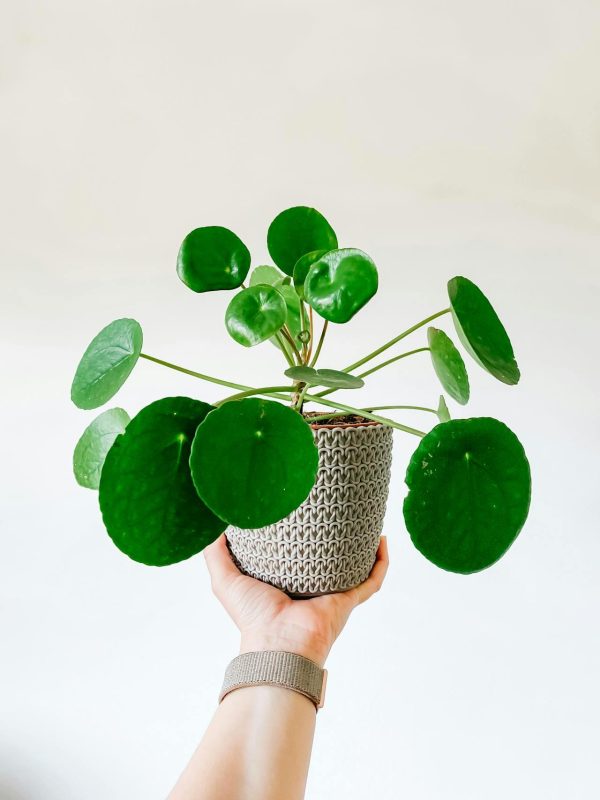
The Chinese Money Plant, also known as Pilea peperomioides or pancake plant, is a charming houseplant renowned for its round, coin-shaped leaves that symbolize good luck and prosperity. Native to the Yunnan province of China, this plant has gained immense popularity for its unique appearance and easy care. It flourishes in bright, indirect sunlight and prefers to dry out a bit between watering sessions, making it an ideal choice for those with busy lifestyles.
For cat owners, the Chinese Money Plant presents a low-risk opportunity to enrich indoor spaces without compromising pet safety. This plant is non-toxic to cats, allowing you to enjoy its beauty without worrying about harmful ingestion. The plant’s succulent-like leaves can be quite enticing to curious felines, so it’s a good idea to keep the Pilea on a high shelf or within a hanging planter. Apart from being safe, the Chinese Money Plant is also easy to propagate, meaning you can start new plants from leaf cuttings and share them with fellow plant lovers, all while ensuring that your home remains cat-friendly.
Echeveria (Echeveria spp.)
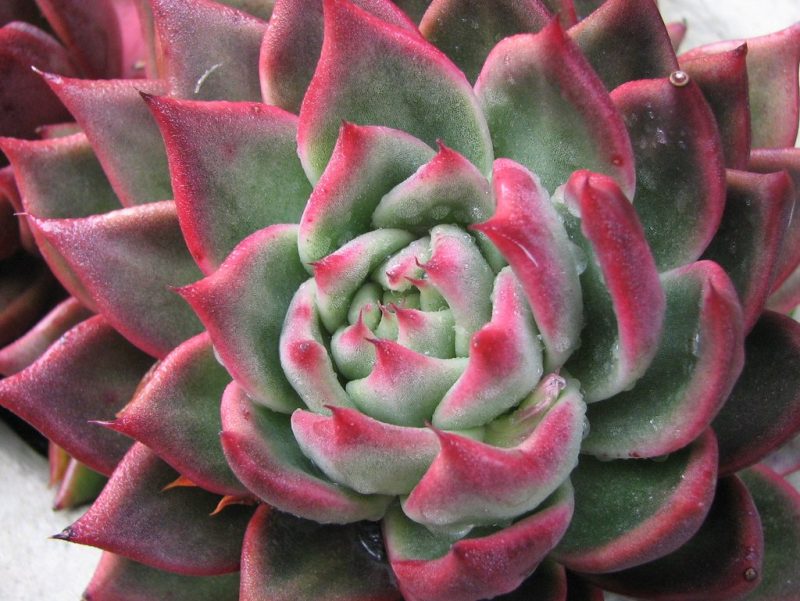
Echeveria is a popular genus of succulent plants that features rosette-shaped leaves in a variety of colors, from deep blues and greens to striking purples and pinks. These hardy plants are perfect for indoor settings, thriving in bright light with minimal water. Their architectural forms make them aesthetically pleasing, and they can easily blend into various decor styles, adding a touch of elegance to any room. Due to their drought tolerance, Echeverias are ideal for individuals who prefer low-maintenance plants, allowing you to enjoy the beauty of succulents without extensive care requirements.
From a feline perspective, Echeverias are completely safe for cats. Unlike some succulent relatives with toxic compounds, Echeveria plants contain no harmful substances, making them an excellent choice for households with pets. Nonetheless, while these plants are harmless, they can still be interesting playthings for curious cats. If your kitty shows an interest, consider creating a designated area for them to explore—perhaps a small, engaging cat-friendly plant garden away from your Echeverias. Their vibrant colors and interesting textures are sure to attract both attention and aesthetic admiration, allowing you to enjoy the best of both worlds.
Gloxinia (Sinningia speciosa)
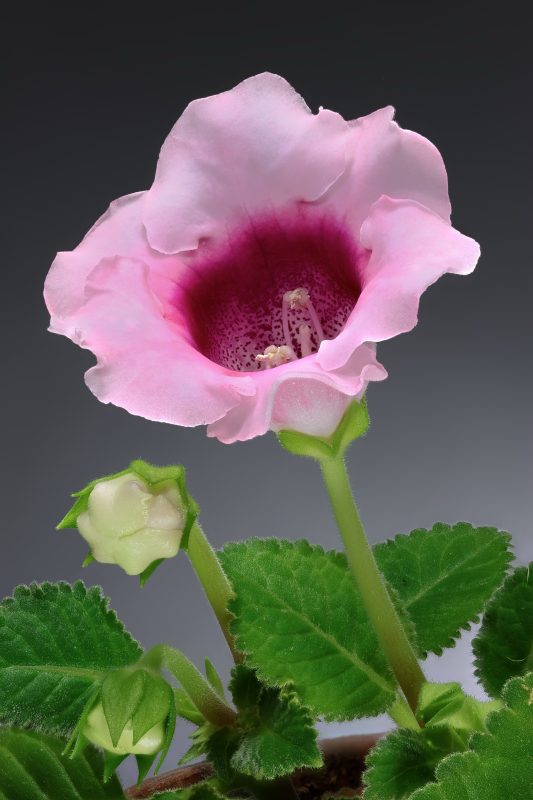
Gloxinia, also known by its scientific name Sinningia speciosa, is a spectacular flowering plant that can add a splash of color to your indoor garden. Originating from the tropical climates of South America, Gloxinias produce large, bell-shaped flowers that come in a range of vivid shades, including deep purples, vibrant pinks, and bright reds. They thrive best in bright, indirect light and prefer moderate humidity, making them well-suited for homes with more temperate environments. Their lush green foliage serves as a perfect backdrop for their stunning blooms.
One of the standout features of Gloxinias is their safety for cats, as these plants are non-toxic. Pet owners can enjoy the beauty of these exquisite flowers without fear of health risks to their furry companions. Although cats may be curious about the appealing blooms, it’s advisable to provide them with alternative safe plants or toys to deter them from nibbling on the Gloxinia leaves. When properly cared for, these plants can bloom multiple times a year, bringing vivid life to your space and delighting both you and your pets.
Spider Plant (Chlorophytum)
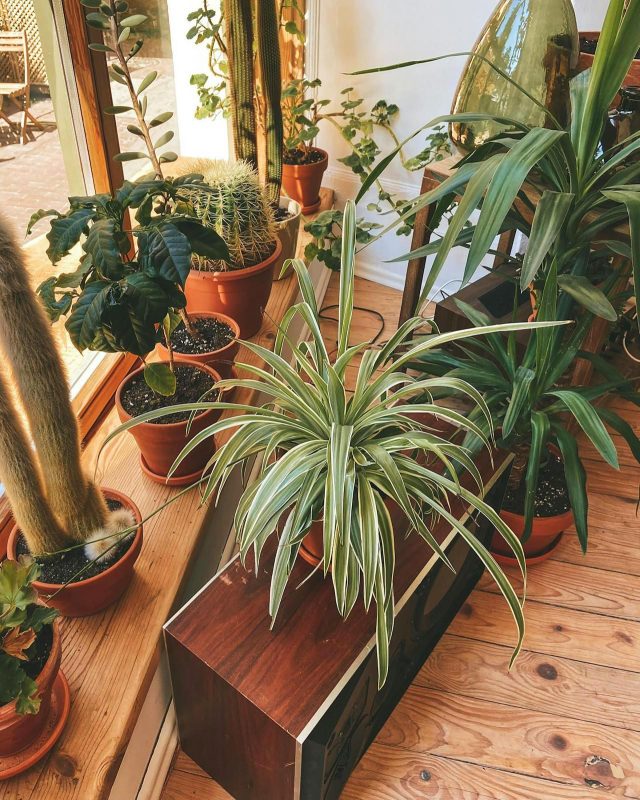
The Spider Plant is a beloved classic among indoor gardeners, known for its striking arching green leaves and small “babies”—young offshoot plants that dangle from the mother plant. Spider Plants are incredibly resilient and adapt well to various indoor conditions, making them an excellent choice for newcomers to plant care. They prefer bright, indirect light but can also thrive in lower light conditions, making them versatile additions to any room. Regular watering and occasional fertilization will help them flourish.
What makes the Spider Plant particularly appealing to pet owners is its non-toxic nature. This plant not only enhances air quality by filtering out toxins, but it also provides an interesting landscape for cats. The long, ribbon-like leaves and dangling baby plants can intrigue and entertain your feline friends. While the Spider Plant won’t harm your cat if they choose to paw at it or even take a nibble, it’s good to know that excessive munching on any plant can still upset their tummy. Placing the Spider Plant in an area where it’s visible but not overly accessible can allow your cat to enjoy its beauty while keeping it safe.
Venus Fly Trap (Dionaea muscipula)
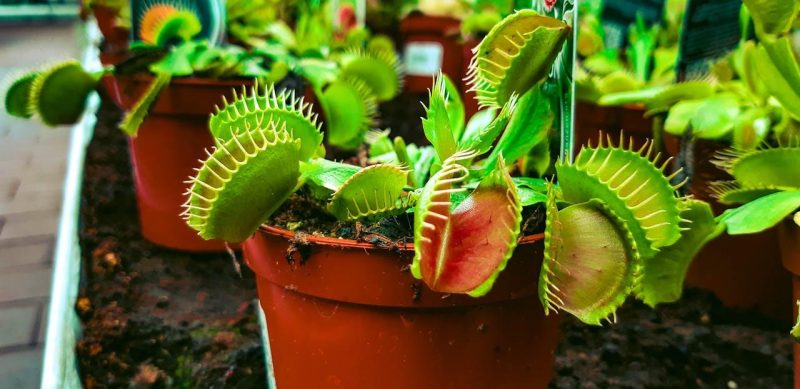
The Venus Fly Trap is one of nature’s most fascinating plants, renowned for its carnivorous feeding habits. While you wouldn’t expect a plant that consumes bugs to be cat-friendly, the Venus Fly Trap is indeed non-toxic to cats. Native to the wetlands of North and South Carolina, this unique plant thrives in bright, direct sunlight and enjoys high humidity, with a preference for distilled water or rainwater for optimum health.
The mechanism of the Venus Fly Trap is an intriguing sight, with its lobed leaves designed like jaws that snap shut when unsuspecting insects brush against its sensitive trigger hairs. While the Venus Fly Trap primarily feeds on bugs rather than cats, its intriguing appearance can capture the attention of curious felines. While you can let your cats admire this carnivorous wonder from a safe distance, be cautious if they start batting at the traps, as they might inadvertently damage the plant.
To care for a Venus Fly Trap in a cat-friendly environment, ensure it has a designated space where it can receive adequate light without the risk of being knocked over by playful paws. This plant serves as a conversation starter while providing a unique blend of beauty and curiosity that’s perfect for households that appreciate the unusual.
Areca Palm (Dypsis lutescens)
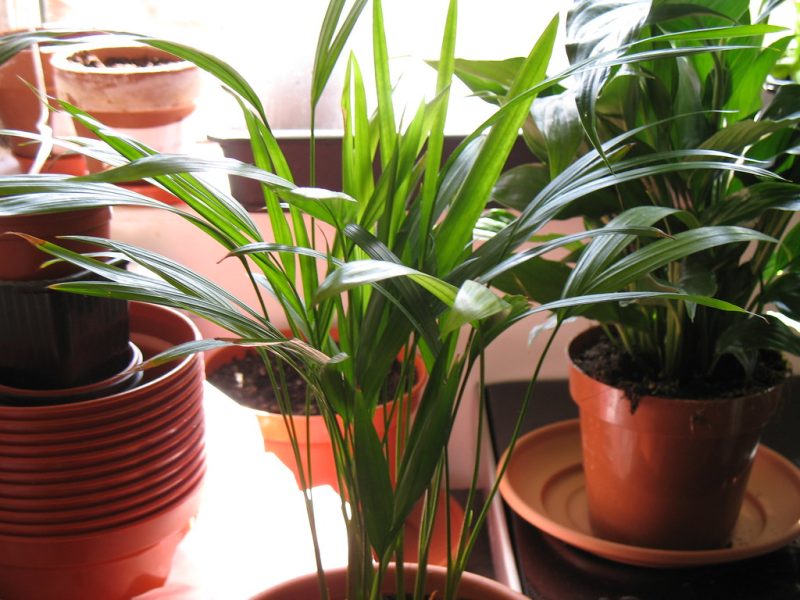
The Areca Palm, also known as the Butterfly Palm, is a striking choice for indoor gardening, revered for its graceful feathery fronds that lend a tropical vibe to any space. Thriving in bright, indirect light, this palm is not only aesthetically pleasing but also acts as a natural air purifier, filtering out toxins and enhancing indoor air quality. The Areca Palm prefers a humid environment, making it an excellent option for homes with high humidity or those who enjoy misting their plants regularly.
If you’re a cat owner, you’ll be pleased to know that the Areca Palm is non-toxic to felines. This makes it an ideal addition for households with curious cats who may be tempted to explore or even nibble on the leaves. The delicate, arching fronds can serve as playful toys for your feline companions, so placing the palm in a stable location is important to prevent accidental tipping or damage. Not only does the Areca Palm contribute to a lush aesthetic in your home, but its safety for cats allows you to showcase your green thumb without concerns for your pets’ well-being.
Calathea (Calathea spp.)
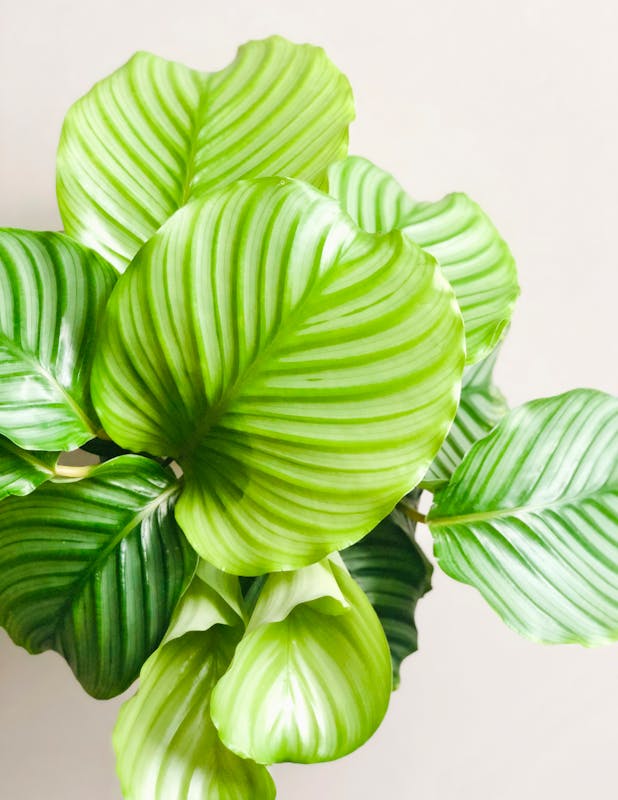
Calathea, often referred to as the prayer plant for its unique leaf movements, is a captivating addition to any indoor plant collection. Known for their colorful and intricately patterned foliage, Calathea species such as Calathea orbifolia and Calathea zebrina can elevate the visual appeal of your home. These plants prefer low to medium light conditions and thrive in high humidity, making them perfect for bathrooms or kitchens. They are especially appreciated for their ability to enliven dull spaces with their stunning leaves.
From a pet safety perspective, Calatheas are completely cat-friendly and non-toxic. Cat owners can enjoy the beauty of their vibrantly patterned leaves without the worry of exposure to toxic compounds. While Calatheas may intrigue cats with their vibrant shapes and textures, it’s best to monitor their interaction to prevent playful digging or chewing, which could damage the delicate leaves. Placing your Calathea at an appropriate height or within a decorative terrarium can keep both the plant and your curious cats safe, allowing you to appreciate this beauty without compromising your pets’ health.
Haworthia (Haworthia spp.)

Haworthia are small, succulent plants that come in an array of interesting shapes and sizes, making them perfect for adding visual variety to your indoor plant collection. These hardy succulents are often characterized by their rosette formations and attractive fleshy leaves, which are often adorned with intricate white markings or spines. Haworthia thrive in bright, indirect light and require minimal watering, providing a low-maintenance option for busy plant parents.
What sets Haworthia apart for cat owners is their non-toxic nature. These plants not only offer beauty but also peace of mind, as you can rest easy knowing that your feline friends won’t be harmed should they decide to explore or occasionally nibble on the succulent leaves. Their compact size also makes them versatile enough to be showcased on desks, windowsills, or shelves without taking up too much space. Additionally, Haworthia are easily propagated through offsets, allowing you to expand your collection without risking your cat’s safety.
Polka Dot Plant (Hypoestes phyllostachya)

The Polka Dot Plant, scientifically known as Hypoestes phyllostachya, is a delightful houseplant celebrated for its eye-catching, variegated leaves that showcase speckles of vibrant pink, white, or red against a backdrop of lush green. This unique appearance makes it a standout choice for adding color and texture to your indoor garden. Polka Dot Plants are relatively easy to care for, preferring bright, indirect light and consistent moisture to thrive, though they can adapt to lower light environments.
For cat owners, the Polka Dot Plant is a safe addition to your home, as it is non-toxic to felines. This means you can enjoy its striking visuals without the anxiety that comes with potential harm to your pets. While the plant’s attractive leaves may intrigue your curious kitties, it’s a good idea to monitor their interactions. Polka Dot Plants can be sensitive to overwatering and changes in light, so providing them a stable environment will keep both the plant and your cats happy. Consider placing this vibrant plant on a shelf or in a decorative pot to elevate its beauty while ensuring it remains out of reach from overly adventurous paws.
Air Plant (Tillandsia stricta)
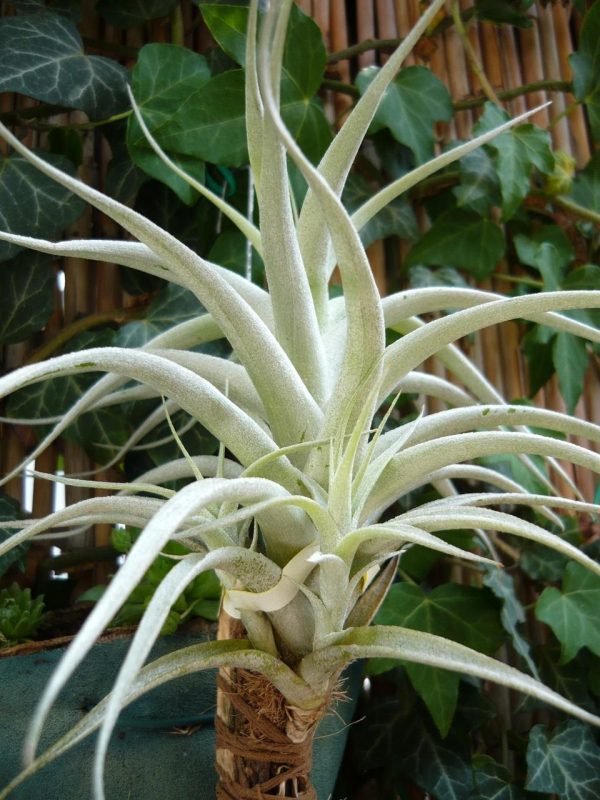
Air Plants, particularly Tillandsia stricta, break the traditional mold of houseplant care. These fascinating epiphytes thrive without soil, drawing moisture and nutrients from the air through their specialized leaves. Air Plants are incredibly versatile and can be displayed in a myriad of creative ways—whether nestled in terrariums, attached to driftwood, or sitting in decorative bowls. They require bright, indirect light, and regular misting or soaking to maintain their health, which adds an interactive element to their care.
One of the most reassuring aspects of air plants is that they are safe for cats. This allows you to explore various display options without the worry of toxic reactions if your furry friends decide to investigate. Their unusual growth habit and texture might pique a cat’s curiosity, encouraging playful engagement. To ensure your Air Plant remains in optimal condition, consider using a fine mesh or decorative cover that allows air circulation while keeping your plant intact, preventing any playful pawing. With their unique charm and safety for pets, Air Plants can help you create a living decor that is both stylish and stress-free.
Prayer Plant (Maranta leuconeura)
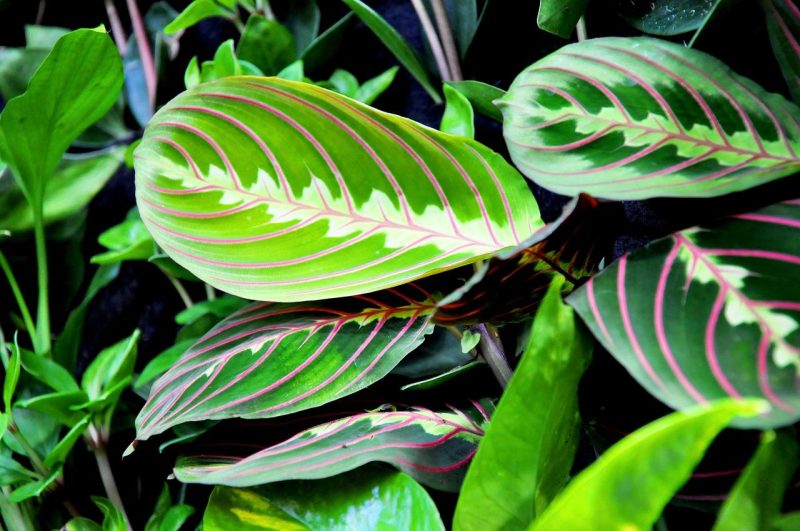
The Prayer Plant, known scientifically as Maranta leuconeura, is cherished among indoor plant enthusiasts for its distinctive foliage and fascinating behavior. Named for the way its leaves fold upward at night, resembling hands in prayer, this plant adds a dynamic element to any collection. Its broad, oval leaves showcase striking patterns of vibrant green, dark red, and striking white veins, making it not only an attractive choice but also a conversation starter. The Prayer Plant enjoys a warm, humid environment and thrives in low to bright indirect light, which makes it suitable for various spots in your home.
For cat owners, the Prayer Plant is also a safe companion as it is non-toxic and won’t pose any health risks to your furry friends. While your cat may be intrigued by the unique leaf movements and patterns, it’s important to keep an eye on their interactions to avoid any unnecessary damage from enthusiastic play. The Prayer Plant’s need for consistent moisture and humidity can also make it an excellent opportunity for you to employ creative watering techniques, such as placing a pebble tray beneath the pot or misting the leaves regularly. This ensures both the vitality of the plant and an engaging care routine that complements your lifestyle while keeping your indoor environment safe for your cats.
Friendship Plant (Pilea involucrata)
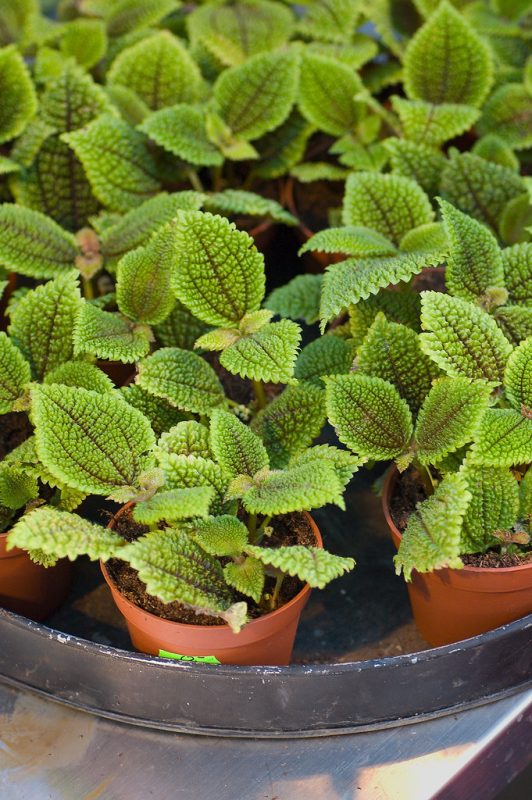
The Friendship Plant, scientifically known as Pilea involucrata, is a charming houseplant that brings a touch of warmth and coziness to any living space. Renowned for its distinct quilted leaves and lush greenery, this plant is often regarded as a symbol of friendship due to its ability to propagate easily, allowing gardeners to share cuttings with friends. Thriving in bright, indirect sunlight, the Friendship Plant prefers well-draining soil and consistent moisture, making it a delight to care for.
One of the standout features of the Friendship Plant for cat owners is its non-toxic status, allowing you to enjoy its beauty without worry. The soft, textured leaves may attract the curiosity of your feline companions, prompting them to inspect or even swat at the plant. To maintain the plant’s health amidst such interactions, consider placing it on a pedestal or in a decorative pot that keeps it elevated while still giving your cat a good view. Additionally, creating a small oasis around the Friendship Plant with sturdy stones or decorative elements can help protect its delicate foliage while also enhancing your interior decor. By choosing this inviting plant, you can nurture both your friendship with nature and your bond with your furry pal.
Peperomia (Peperomia spp.)
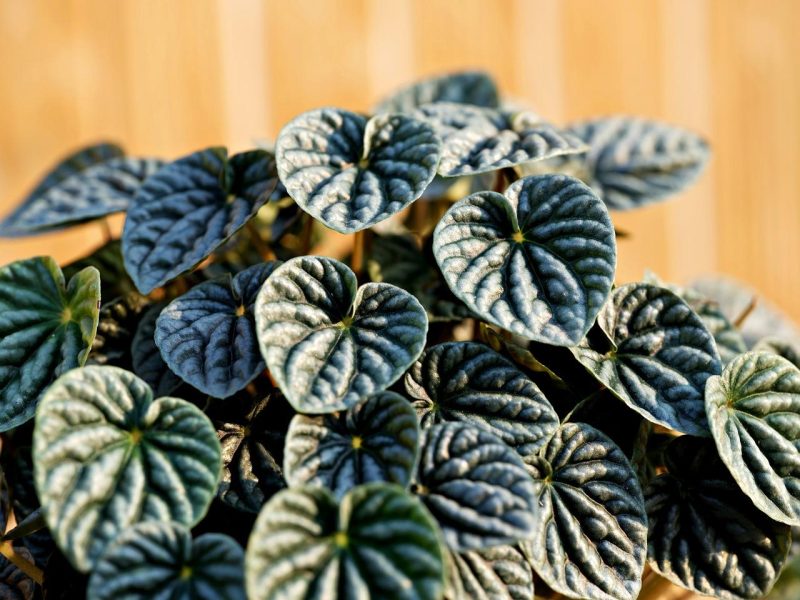
Peperomia is a diverse genus that encompasses a wide variety of charming species, making it an excellent choice for indoor gardeners who seek variety without the worry of toxicity. Known for their plump, succulent-like leaves, Peperomia plants are available in numerous colors and shapes, from the popular Peperomia obtusifolia (also called Baby Rubber Plant) to the strikingly variegated Peperomia caperata. These plants draw attention not only for their beauty but for their relatively low maintenance needs, thriving in moderate to bright indirect light and requiring minimal watering.
For cat owners, the non-toxic nature of Peperomia means that you can freely cultivate these lovely plants in your home without fear of adverse effects if your cat decides to investigate. The thick, fleshy leaves of Peperomia may entice your cats to nibble, but the plant’s mildness means that even if they do indulge, they won’t face any health risks. To create an engaging and secure environment for both your plant and your pets, consider placing the Peperomia in a terrarium or hanging planter, where its charming foliage can be appreciated from a distance. Surrounding it with complementary decor can provide a dynamic showcase for your indoor garden while keeping your feline friend at bay.
Orchid (Orchidaceae)
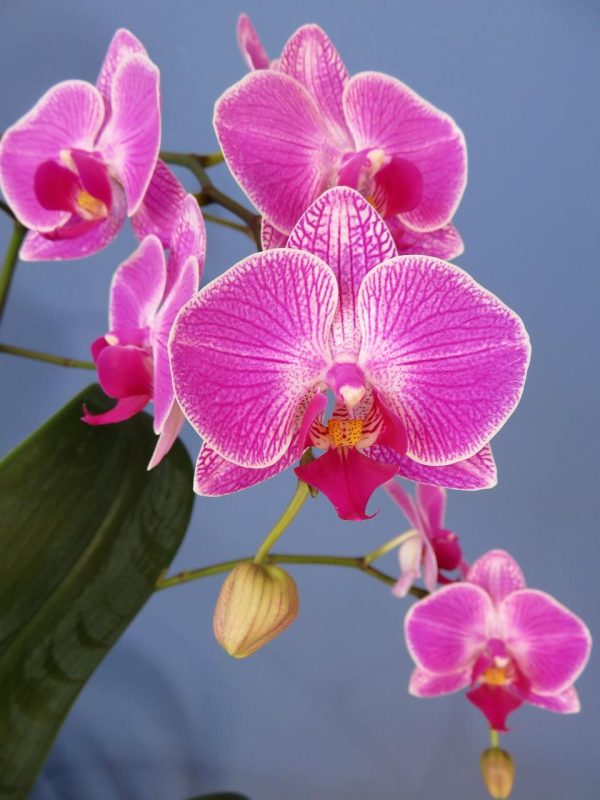
Orchids represent one of the largest and most diverse families of flowering plants, boasting an extensive array of shapes, sizes, and colors. Popular varieties like Phalaenopsis (Moth Orchid) are particularly sought after for their stunning flowers and elegant appeal. Orchids thrive in bright, indirect light and require specific watering and humidity conditions to flourish, often making them a favorite among dedicated plant enthusiasts. While they may appear high-maintenance, many orchids can be cared for successfully with a little knowledge and attention.
For cat owners, the good news is that most common varieties of orchids, especially Phalaenopsis, are non-toxic to cats, therefore, you can enjoy their exotic beauty free from worry about your pet’s safety. The graceful blooms have a mesmerizing effect that can elevate any indoor space, and while they are typically not attractive for cats to chew on, it’s still prudent to place them in a secure location to prevent potential accidents or spillages during playful exploration. Additionally, the relatively long lifespan of orchid blooms means that you can enjoy bursts of color for months at a time, adding an elegant touch to your home while providing a safe haven for your beloved cats.
Mosaic Plant (Fittonia albivenis)
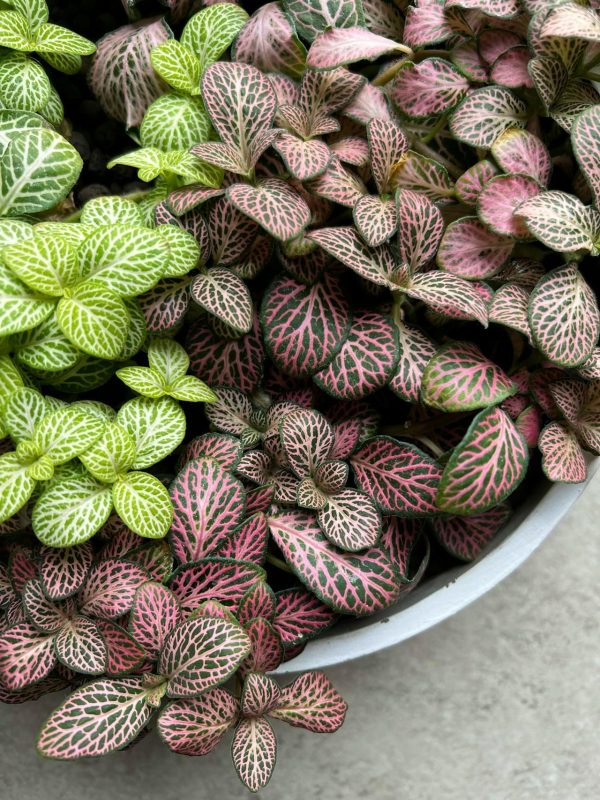
The Mosaic Plant, scientifically known as Fittonia albivenis, is a visually captivating houseplant cherished for its vividly patterned leaves. With deep green foliage etched with striking white or pink veins, this plant brings an artistic flair to any indoor setting. Fittonia thrives in low to medium light conditions, making it ideal for spaces that don’t receive direct sunlight. It also prefers a humid environment, which makes it a great candidate for bathrooms or kitchens, where moisture is naturally higher.
For cat owners, the Mosaic Plant is a wonderful addition due to its non-toxic nature, allowing you to enjoy its beauty without the fear of harmful effects on your pets. The lush, soft leaves may draw the attention of curious cats, inviting gentle explorations. However, it’s essential to cater to the plant’s humidity needs, as too little moisture can stress the leaves and lead to wilting. To delight both the plant and your feline friends, consider placing your Mosaic Plant in a decorative terrarium or open dish filled with pebbles and water, creating humidity while providing a unique aesthetic. By nurturing this lively plant, you can enhance your indoor greenery while ensuring a safe haven for your cats.
Bromeliad (Bromeliaceae)

Bromeliads are tropical plants recognized for their distinctive rosette shape and vibrant flower spikes, which can last for several months. With a variety of species to choose from, such as Aechmea, Neoregalia, and Guzmania, these plants can add a spectrum of color and texture to your home. Bromeliads thrive in bright, indirect light and prefer well-draining potting mix along with some humidity, making them an excellent choice for sunlit kitchens or living rooms where they can bask in natural light.
What makes bromeliads particularly appealing for pet owners is that they are generally considered non-toxic to cats. This allows you to showcase their stunning blooms without that constant worry about your cat’s safety or well-being. Although your curious feline may be drawn to the plant’s interesting texture and vibrant colors, it’s important to monitor their interactions. Consider placing your bromeliad on a raised surface or within a decorative holder that provides an elevated view, allowing your cat to enjoy its beauty from a distance while protecting it from eager paws. This plant not only brings a pop of color to your indoor environment but also enriches it with a bit of tropical flair.
Ponytail Palm (Beaucarnea recurvata)
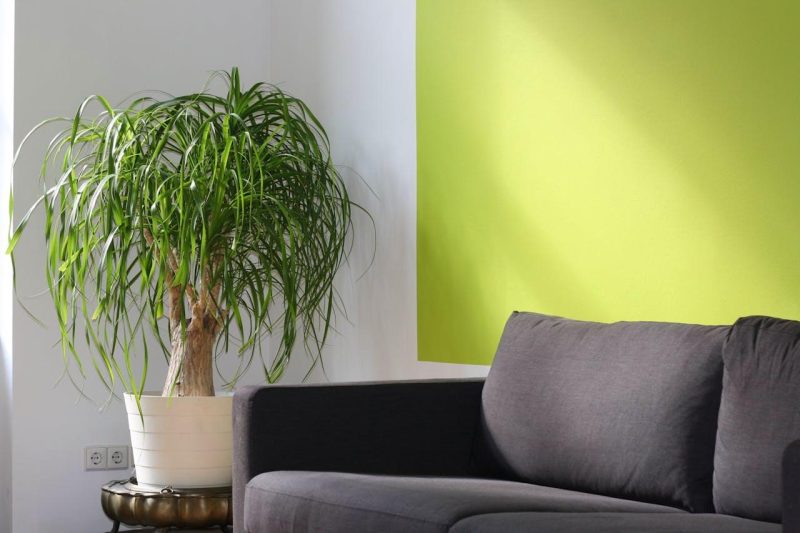
The Ponytail Palm, or Beaucarnea recurvata, is a delightful and unique succulent that brings a touch of the desert into your home. Known for its bulbous trunk that stores water and long, cascading green leaves that resemble a ponytail, this plant is incredibly resilient and low-maintenance. Ponytail Palms prefer bright light but can adapt to lower light environments, making them versatile enough for various rooms in your home. Additionally, they require minimal watering, making them an excellent choice for those who may not have a lot of time to dedicate to plant care.
For cat owners, the Ponytail Palm is a safe choice, as it is non-toxic to cats, allowing you to foster an environment that is both appealing and safe for your pets. Although its long leaves can be enticing for curious cats to swat or nibble at, the sturdiness of the plant means that it can withstand mild feline interaction. To ensure its thriving health while accommodating your pets, consider placing the Ponytail Palm on a stable surface, like a console table, where your cat can admire it while minimizing potential disturbances. This charming plant not only adds a unique aesthetic to your indoor space but also enhances your home’s atmosphere with a stress-free botanical companion for your cats.
Purple Waffle Plant (Hemigraphis alternata)
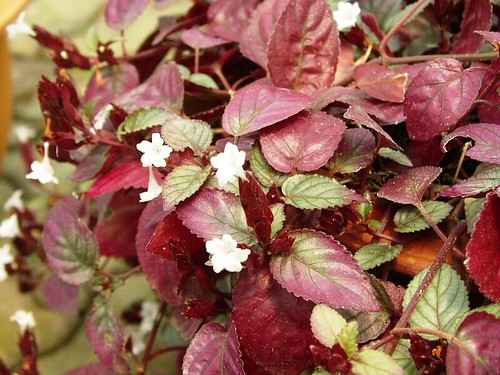
The Purple Waffle Plant, scientifically referred to as Hemigraphis alternata, is a striking indoor plant notable for its textured, ruffled leaves that exhibit rich shades of green, purples, and silvers. This plant’s unique leaf structure and color variations make it an attractive addition to any indoor garden. Preferring low to bright indirect light, the Purple Waffle Plant thrives with consistent moisture, making it a great choice for environments that can offer some humidity and care.
For cat owners, the significant advantage of the Purple Waffle Plant is its non-toxic nature. This means you can enjoy its beauty without the worry of any harmful effects on your furry companions. While the plant’s appealing texture might entice cats to explore it, monitoring their interactions is advisable to prevent any accidental damage. Utilizing decorative pots or placing it on a bookshelf can help elevate the plant and protect its delicate leaves from inquisitive paws. With the right care, the Purple Waffle Plant will flourish, providing vibrant color and enriching your home while keeping your cats safe.
Purple Passion Vine (Gynura aurantiaca)
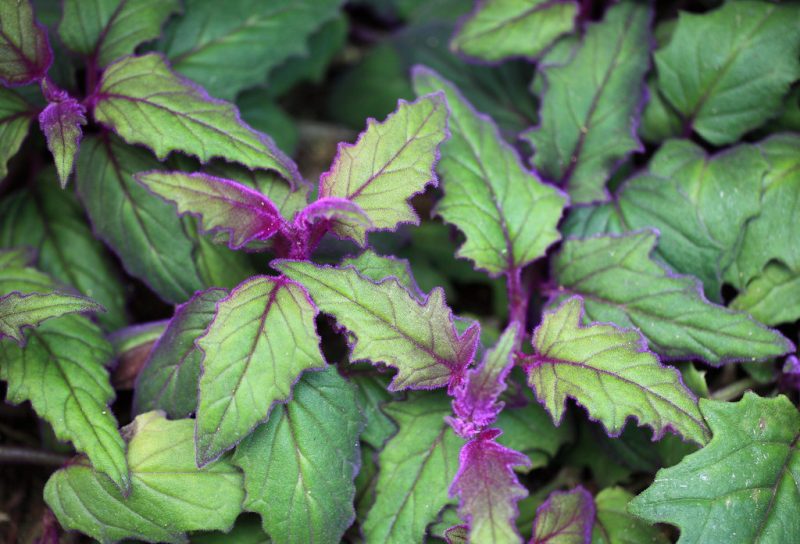
The Purple Passion Vine, or Gynura aurantiaca, is a captivating indoor plant that enchants with its lush green leaves adorned with striking purple hairs, creating a beautiful contrast that brightens any space. As a climbing vine, this plant can be trained to grow up trellises or allowed to trail elegantly from hanging planters. Typically, the Purple Passion Vine enjoys bright, indirect light and moderate watering, making it relatively easy to care for as long as its humidity needs are met.
One of the standout features of the Purple Passion Vine for pet owners is its non-toxic classification, allowing for the serene enjoyment of this breathtaking plant without the risk to your cats. Though your furry friends might be intrigued by the velvety leaves and vibrant colors, it’s important to manage their interactions. To do this, consider using hanging planters that provide a beautiful display while keeping the plant out of reach from those playful paws. Whether you display this vine as a trailing plant or as part of a larger arrangement, its stunning foliage will bring joy and a touch of whimsical beauty to your home while remaining a safe environment for your feline companions.
Parlor Palm (Chamaedorea elegans)
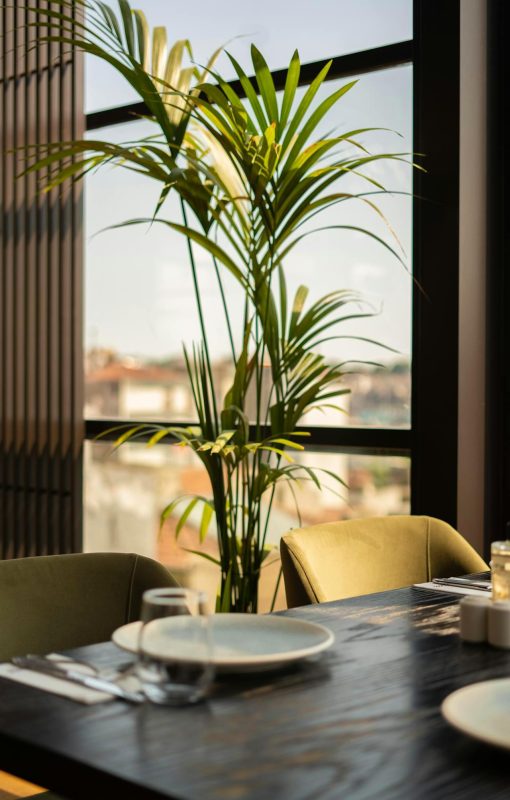
The Parlor Palm, scientifically known as Chamaedorea elegans, is a timeless classic in the world of houseplants. Its graceful fronds and slow growth rate make it a perfect addition for both novice and experienced indoor gardeners. Parlor Palms thrive in low to bright indirect light, making them adaptable to various rooms and lighting conditions. They prefer to be watered when their top layer of soil feels dry, showcasing their resilience and ease of care.
For cat owners, the Parlor Palm holds significant appeal because it is non-toxic to cats, offering peace of mind while enhancing the aesthetic of your home. This elegant plant not only adds a tropical vibe but also purifies the air, creating a healthier indoor environment. Due to its relatively sturdy nature, Parlor Palms can withstand some feline curiosity, although it’s best to place them in areas where your cats can admire them without the risk of knocking them over. Opting for decorative planters or positioning the plant on a sturdy piece of furniture can help maintain its pristine appearance while providing a cat-safe environment. By adding this understated yet stylish plant to your indoor collection, you can foster an inviting atmosphere that prioritizes both beauty and your pets’ safety.
Staghorn Fern (Platycerium bifurcatum)
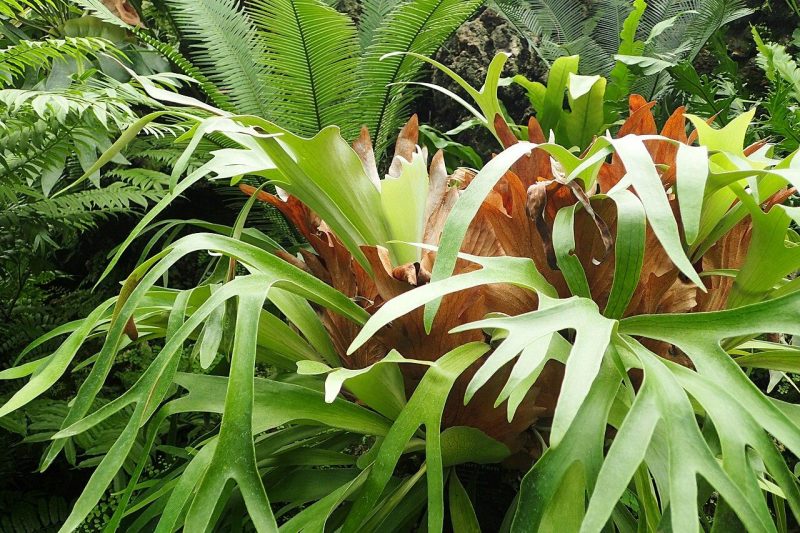
The Staghorn Fern, known scientifically as Platycerium bifurcatum, is a unique and striking houseplant that adds an exotic touch to indoor gardens. Named for its antler-like fronds, this epiphytic fern is commonly mounted on wooden plaques or grown in hanging baskets, allowing its fascinating shape to take center stage. Adaptable to various light conditions, the Staghorn Fern thrives in bright, indirect light and requires moderate humidity to flourish. Watering is typically done by soaking the entire mount in water once the soil feels dry, and with the right care, it can thrive for many years.
For cat owners, the Staghorn Fern is a fantastic choice due to its non-toxic nature, making it completely safe for your inquisitive pets. The plant’s unusual appearance can captivate your cat’s attention, inviting them to explore without the risk of any harmful effects from nibbling on its leaves. To protect this delicate fern from overly curious paws, consider creating a designated space for the plant, such as a shelf or a high windowsill, where it can be appreciated from afar. Additionally, the unique look of the Staghorn Fern can serve as a stimulating focal point in your home décor, showcasing your style while ensuring a pet-friendly environment.
Money Tree (Pachira aquatica)
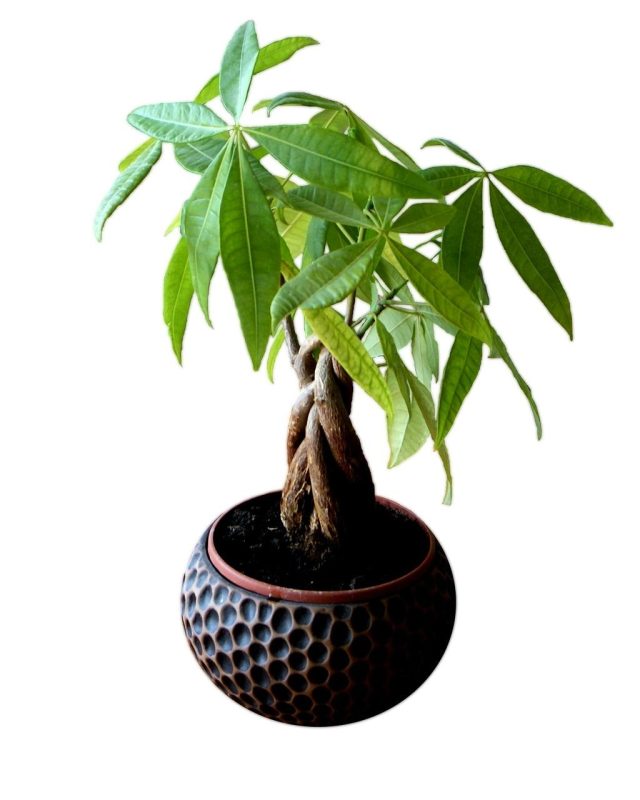
The Money Tree, or Pachira aquatica, is not only known for its charming appearance but also carries cultural significance as a symbol of prosperity and good luck, particularly in Feng Shui practices. This plant features glossy, palmate leaves that gracefully sprout from a braided trunk, creating a visually appealing addition to any indoor space. The Money Tree thrives in bright, indirect light but can tolerate lower light levels, making it suitable for various settings. It prefers to be watered thoroughly and allowed to dry slightly between waterings, ensuring healthy growth.
What makes the Money Tree an ideal plant for cat owners is its non-toxic status. You can enjoy the aesthetic and symbolic benefits of this popular houseplant without worrying about the safety of your feline friends. The lush foliage may pique your cat’s curiosity, but its robust structure can endure some minor interactions. To further enhance both your plant’s health and your cat’s safety, consider positioning the Money Tree on a sturdy table or plant stand where it can soak up the light while remaining safe from enthusiastic paws. Integrating this captivating plant into your home can not only bring a dash of good fortune but also nurture a secure and enriching environment for your pets.


